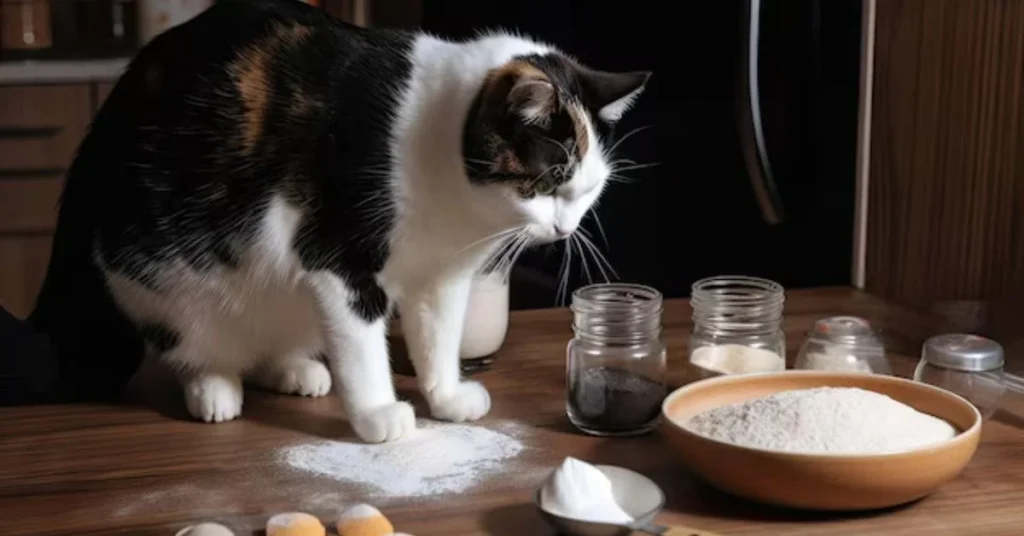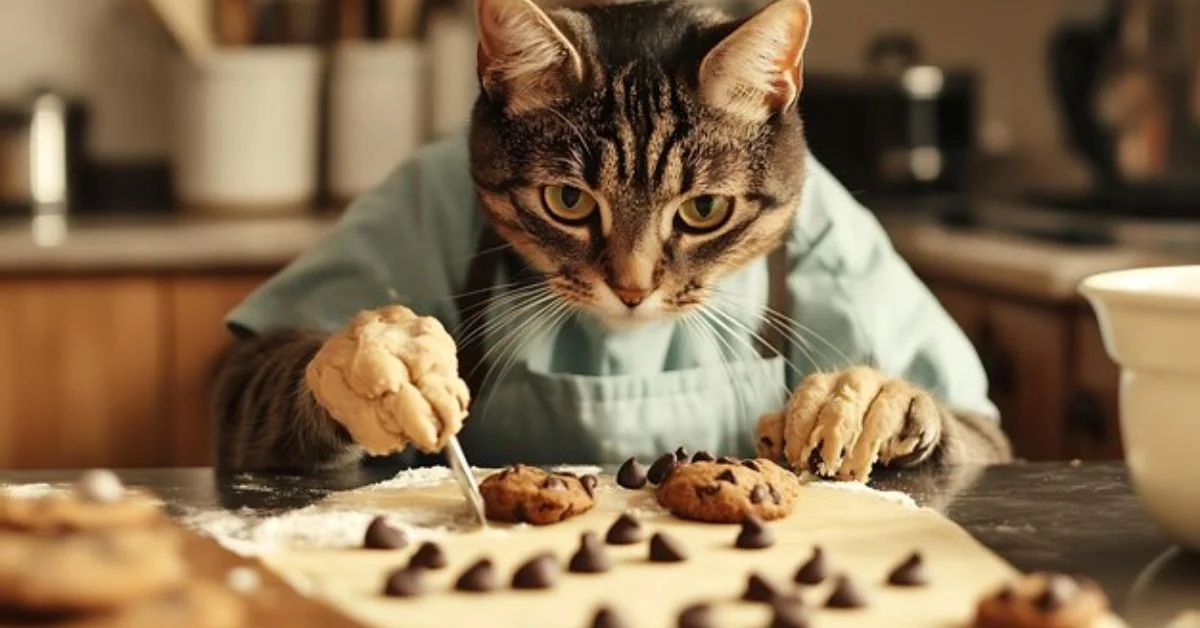Cats are fascinating creatures, and their unique behaviors often spark curiosity among their human companions. One particularly adorable and mysterious action is “making biscuits,” the term used to describe the rhythmic motion of a cat pressing its front paws alternately against a soft surface. But why do cats make biscuits? This behavior has deep-rooted origins and carries multiple meanings. In this article, we explore the reasons behind this instinctual habit, its variations, and how it strengthens the bond between cats and their owners.
What Does ‘Making Biscuits’ Mean?
“Making biscuits” refers to the kneading motion that cats make with their paws. The movement resembles kneading dough, which is why it has earned this charming nickname. Cats will often “make biscuits” on soft surfaces like blankets, pillows, or even their owner’s lap. While this behavior is commonly observed in domestic cats, it has roots in the wild and is a universal trait across feline species.
Why Do Cats Make Biscuits?
Cats make biscuits for several reasons, many of which are tied to their instincts and emotional states. Below are the primary explanations:
1. A Kittenhood Instinct
The act of kneading originates in kittenhood. Kittens knead their mother’s belly while nursing to stimulate milk flow. This action creates a positive association with comfort, warmth, and nourishment. As cats grow older, they may continue kneading because it reminds them of the safety and contentment they experienced as kittens.
2. Ancestral Nesting Behavior
In the wild, cats knead grass or leaves to create a soft and comfortable resting spot. This behavior helps prepare a secure place to sleep or give birth. While domestic cats may not need to build nests, the instinct to knead remains deeply ingrained.
3. Territorial Marking
Cats have scent glands in their paw pads, and kneading can serve as a way to mark territory. By kneading on a surface, they leave behind their unique scent, signaling ownership to other animals.
4. Expressing Affection and Bonding
When a cat kneads on its owner, it’s often a sign of love and trust. By “making biscuits” on a person, the cat is demonstrating that it feels safe and content in their presence.
5. Relaxation and Stress Relief
Kneading can be a self-soothing behavior for cats. Much like how humans might fidget or stretch to relieve stress, cats knead as a way to relax and comfort themselves.

Variations in Kneading Behavior
Not all cats knead in the same way, and some may not knead at all. The variations in this behavior can depend on individual preferences, habits, or even breed traits.
- Claw Usage: Some cats extend and retract their claws while kneading, which can be uncomfortable for their human companions if they’re kneading on bare skin.
- One Paw or Both Paws: While most cats use both front paws alternately, others might knead with just one paw or even use all four paws.
- Intensity: Some cats knead gently, while others press with more force.
- Accompanying Actions: Cats may purr, drool, or even suckle on the kneaded surface. This is particularly common in cats that were weaned early.
When Do Cats Make Biscuits?
Cats may knead at specific times or in particular situations, such as:
- Before Resting
Cats often knead before settling down to sleep, mimicking the ancestral habit of preparing a soft sleeping area. - While Cuddling
Kneading often happens during moments of affection, like when a cat is curled up on its owner’s lap or next to a beloved companion. - When Stressed or Anxious
Kneading can also occur during stressful times as a way for cats to self-soothe and reduce anxiety.
Is Kneading a Sign of Happiness?
In most cases, kneading is a sign of happiness and contentment. A cat that is purring, relaxed, and “making biscuits” is expressing its trust and affection. However, context is important—if kneading is accompanied by signs of stress or distress, it may indicate underlying issues that require attention.
Should You Discourage Kneading?
Kneading is a natural and instinctive behavior, and in most cases, it shouldn’t be discouraged. However, there are ways to manage the behavior if it becomes problematic:
- Protect Yourself from Claws
If your cat’s claws are sharp, kneading on your lap can be uncomfortable. Regularly trimming your cat’s nails or providing a thick blanket as a barrier can help. - Encourage Appropriate Surfaces
Offer your cat soft blankets, cushions, or cat beds as designated kneading spots. This can prevent damage to furniture or discomfort during cuddles. - Avoid Punishment
Kneading is a positive behavior for cats, so punishing them for it can cause confusion or fear. Instead, redirect their attention to acceptable surfaces if necessary.
When Kneading Might Be a Concern
While kneading is usually harmless, excessive kneading or kneading accompanied by other unusual behaviors could signal a problem. If your cat displays signs of stress, aggression, or obsessive behaviors while kneading, consult a veterinarian to rule out any health or emotional issues.
How Kneading Strengthens the Human-Cat Bond
When cats knead on their owners, it’s often an expression of trust and affection. Understanding this behavior can help strengthen the bond between cats and their human companions. By providing a safe and comfortable environment for your cat, you encourage behaviors like kneading, which indicate happiness and well-being.
Fun Facts About Cats ‘Making Biscuits’
- Kneading is observed in both domestic and wild cats, including lions and tigers.
- Not all cats knead, and the absence of kneading doesn’t indicate any problems—it’s simply an individual preference.
- Cats may knead while suckling on a blanket or toy, particularly if they were weaned early. This mimics nursing behaviors from kittenhood.
- Some cats knead with their back paws as well, although this is less common.
Conclusion
“Making biscuits” is a delightful and instinctual behavior that offers insights into a cat’s emotions and instincts. By understanding why cats make biscuits, owners can appreciate this endearing habit as a sign of trust, comfort, and affection. Whether it’s a way of marking territory, expressing happiness, or relieving stress, kneading is a behavior that showcases the deep bond between cats and their humans. Embracing this behavior with patience and understanding can lead to a more fulfilling relationship with your feline companion.
FAQs about Why Do Cats Make Biscuits
- Why do cats make biscuits on blankets or pillows?
Cats knead on soft surfaces like blankets and pillows because it mimics the comfort of nursing as kittens and helps them relax. - Is it normal for cats to knead and suckle?
Yes, kneading and suckling often occur together, especially in cats weaned too early. It’s a comforting behavior that reminds them of nursing. - Why do cats knead on their owners?
When cats knead on their owners, it’s a sign of affection and trust. They feel safe and happy in your presence. - Do all cats knead?
Not all cats knead, and that’s perfectly normal. The behavior varies among individual cats and may depend on their upbringing or personal habits. - How can I prevent my cat from scratching me while kneading?
Regularly trimming your cat’s nails and using a blanket as a barrier can help prevent scratches during kneading. - Can excessive kneading be a problem?
Excessive kneading may indicate stress or anxiety. If your cat kneads compulsively or shows signs of distress, consult a veterinarian.









